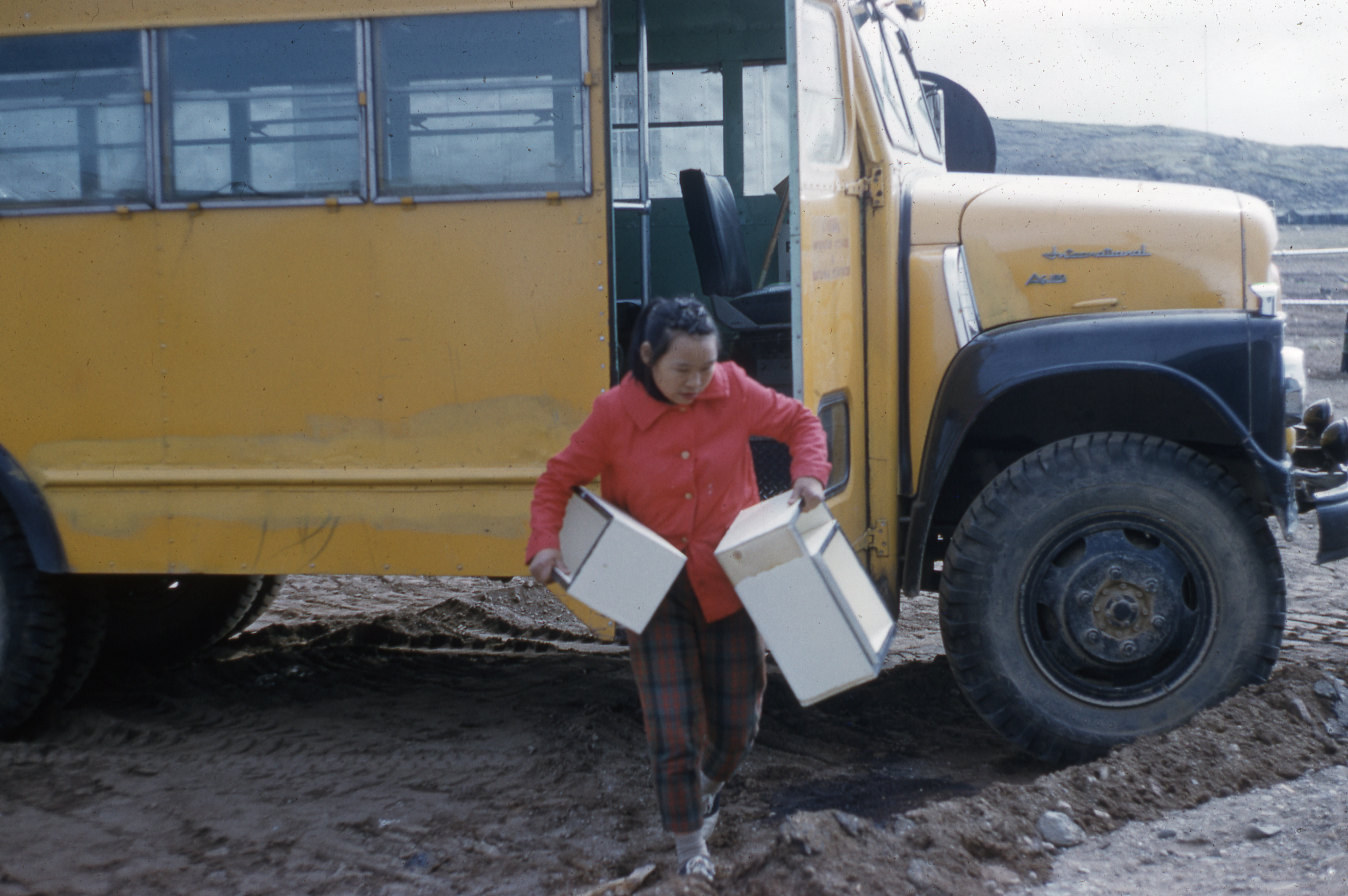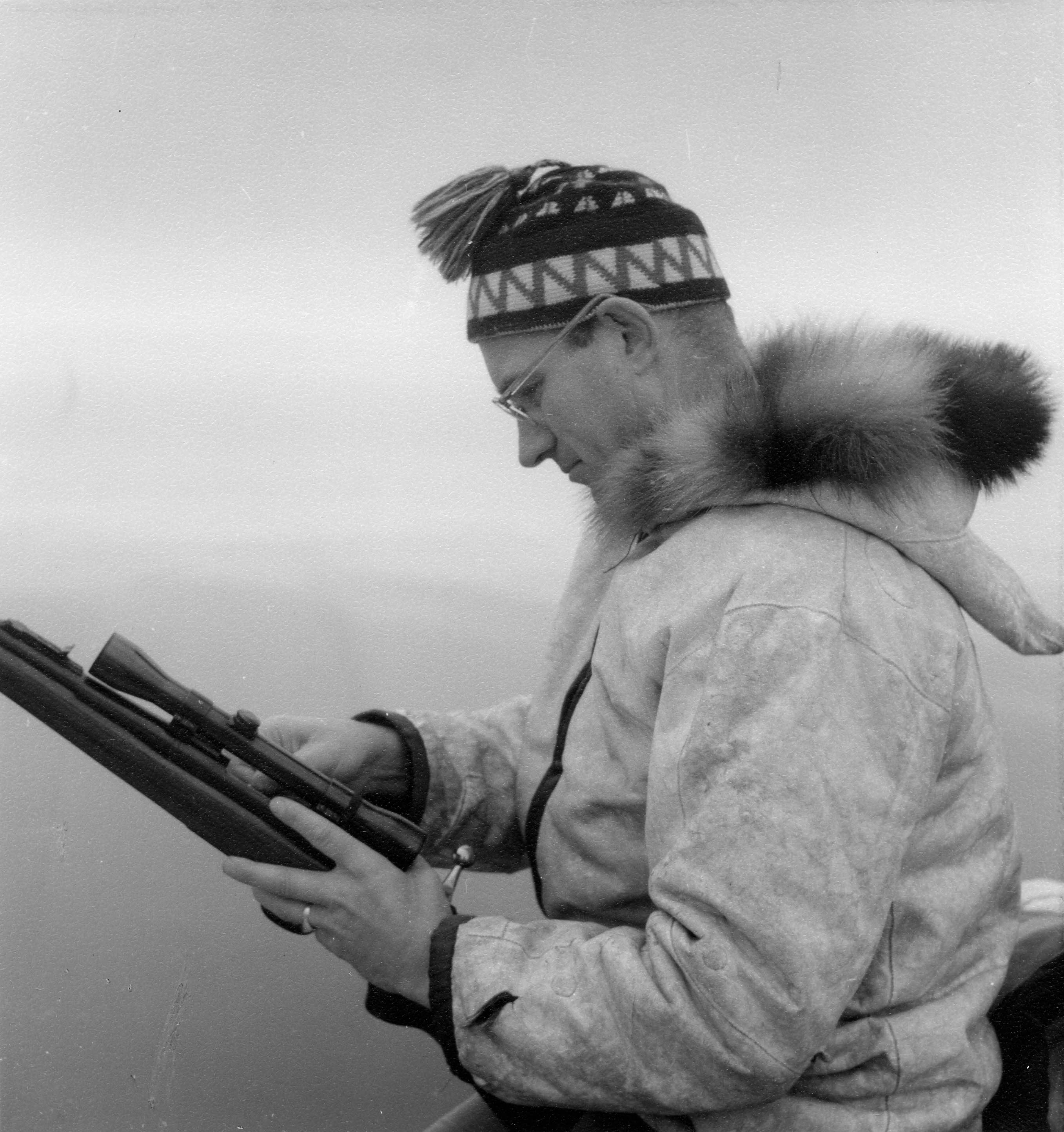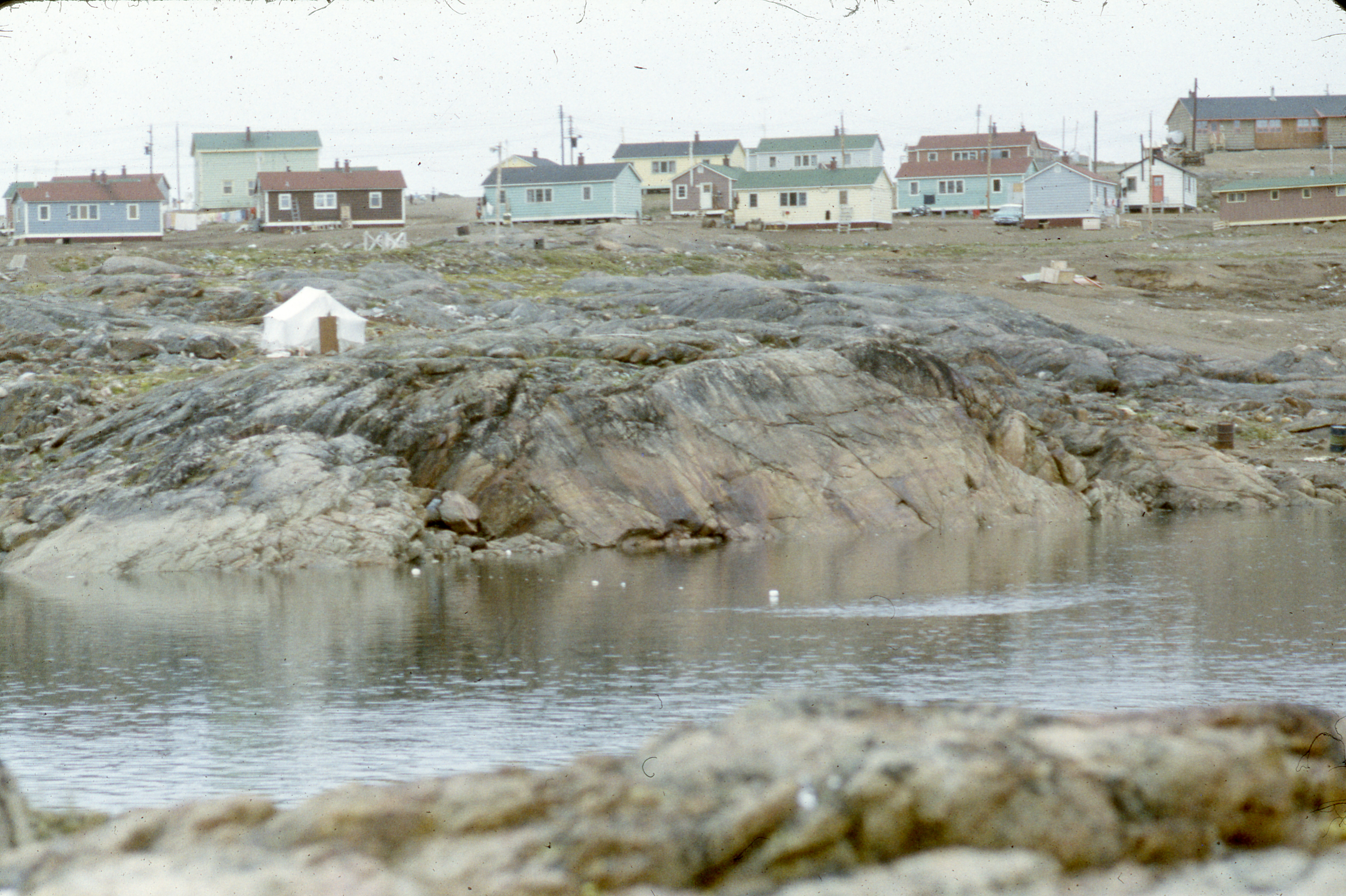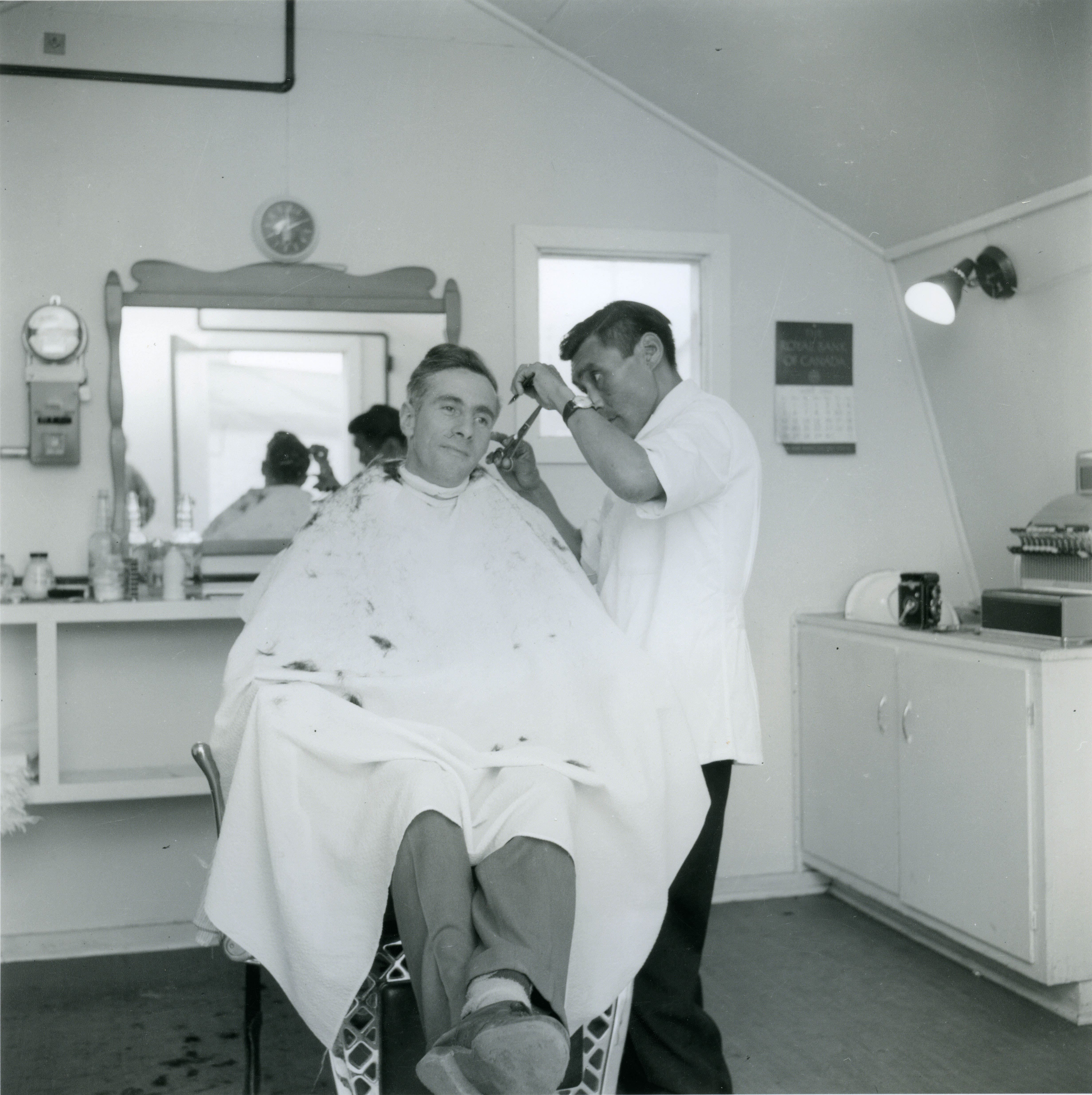Chapter 4 ~ Rehabilitation Centre
Although Frobisher was urbanised to a great extent, there were only two shops, both operated by the Hudson’s Bay Company. There was no bakery and so no loaves of bread were sold in the town. Housewives made their own with dehydrated yeast. Construction companies had their own canteens, and bakers were as important as foremen. To postpone the day when we would have to eat bannock, I was appointed cook of our two-man party on the strength of my proficiency in making oatcakes.
They were made from a recipe culled by a guest at the Inverary Hotel in Cape Breton, and passed on to me. The hotel in their turn had obtained it from a Scot, whose family, according to legend, had carried it across the Atlantic during the great exodus from the Highlands. Somewhere along the journey, the recipe must have been altered, because I became certain as the days passed that no recipe for the oatcakes I was producing deserved to survive.
To our mutual comfort, we discovered a source of baked bread. It could be bought at the Eskimo Rehabilitation Centre. We had business in Apex, so one morning we set off in the bright yellow single decker bus, driven wildly across the tundra by an Eskimo named Charlie. His friends were numerous, and they sat on the back seats, smoking, coughing and ignoring the “No Spitting” sign, printed in English and Syllabics. Charlie seemed to have vital business to discuss with them, and the nerve-splitting journey was spent with Charlie leaning over the back of his driver’s seat, joking, chatting, reassuring nervous passengers, twirling the steering wheel in nonchalant hands bouncing over the corrugated road with the elan of a jet test pilot.

We reached Apex rehab centre with mingled awe and relief, and bundled out of the bus near the canteen where we could smell the aroma of baking bread. An elderly Eskimo came coughing to the counter. I asked for a loaf, but he did not understand. Rosemary explained: “She means bread,” and he disappeared into the kitchen.
He emerged with a brown paper package. The wholesome smell of fresh bread wafted on the air. We broke off pieces of crust and savoured the taste as we followed an Eskimo out of the building. He limped badly and stumbled as he descended the few steps into the gritty street. He was a resident of the Apex rehab centre the gathering place for handicapped and afflicted Eskimos from the Eastern Arctic. The bakehouse was one of the many projects, launched by its tireless superintendent, Bob Green, a former social worker.

Apex offered hope of a new life to Eskimos crippled by disease. In their own society, hunting for their existence, they married young, had a high birth rate and one of the highest infant mortality rates in the world. Their expectation of life was short, for a hunter’s semi-nomadic life was dangerous, and nature ensured the fit survived. The seriously ill succumbed in the severe climate.

In West Baffin Island, a generation ago, if a man became mad he was put alone in an igloo and his fellow hunters surrounded the snow house or tent and all fired their rifles through its walls. No one man bore the responsibility and the impediment to the tribe’s survival was removed.
The rehabilitation centre was the outcome of a more recent government program, largely stimulated by Farley Mowatt’s book, “The Desperate People,” in which he focused attention on the plight of some of Canada’s Eskimo people.
At Apex, the victims of tuberculosis, poliomyelitis, heart disease or the physically handicapped were offered shelter and a means of learning to live in a new and different type of economy. Patients returning from the exile of hospital in the Outside were given a chance to become re-orientated to the Arctic climate before continuing their journeys home to camps in remoter parts of the Eastern Arctic.
We met Mr. Green in his office. He was tall, athletic, in his late thirties and smoked hand rolled cigarettes. His voice was quiet like the Eskimos he worked with, and although he was pressed for time, he explained to us every aspect of the rehab centre as we toured the workshops among the brightly painted wooden houses,
A bare three years previously, there had been few buildings on the site, but it had developed into one of the best maintained permanent settlements for Eskimos on Baffin Island. It even had a fire station. There was garbage removal and the houses were kept trimly painted by the residents who had a strong community spirit.
Criteria of residence at Apex was some handicap and the superintendent’s most important work was the creation of a wide variety of employment for people who were almost all without formal education, people who were “culturally dislocated” and who were to be settled, if possible, in Frobisher as self-supporting wage earners.
“If you sent patients from a sanatorium straight back to the land in winter you’d kill them,” he said. “If they really wish to return to the life of a hunter, Apex gives them a breathing space and time to readjust to the Arctic climate. If they’re badly handicapped and they choose to stay, we find a place for them.”
The houses provided for the people were of the economical “A-frame” construction. They had two rooms but they were waterproof and windproof, with electricity. There was a communal canteen, where they could eat three good meals a day. The cooks were White men, willing to teach any interested Eskimo how to cook, so that in time, the Eskimos could run their own canteen. But it was almost impossible to train Eskimo men in such work. One ex-hunter was asked if he would like to earn his living as a baker and he told Mr. Green: “Get a woman to do it. Circumstances may have forced him to forsake his hunter’s way of life, but it was not going to emasculate him further by making him perform work done by women in Eskimo society.
Typical of some of the tragedies which forced former independent hunters to live at Apex was the case of an eighteen-year-old seal hunter from Pangnirtung. He was crippled in both legs by poliomyelitis. He was treated in a hospital, Outside, and when his legs were fitted with braces he was offered employment in Ottawa. He refused. He also refused to accept the limitations of his crippled legs and declined to stay at Apex. He demanded to be sent home to the tents of his people in distant Pangnirtung, a camp where one supply boat a year and an occasional plane kept contact with the outside.
He was warned of the difficulties he might have to face among his own people, semi-nomadic and living off the land, where for thousands of years only the fittest had survived in the endless battle against the world’s most inhospitable climate.
The young man was adamant and homesick for the smell of sealskin, the taste of fresh seal meat and the freedom of the wide Arctic. He was resolved to go home. A plane took him in to Pangnirtung and restored him to his own people. Within a few days he learned he could no longer live in the world he preferred, among his own kin, and he sent a message to the superintendent of the rehab centre, asking to be taken back to Apex.
His return was arranged and when he got back to the centre he was taught the trade of a launderer. The laundry served the hundreds of people living at Frobisher townsite and was one of the first minor industries initiated by Mr. Green. He and an Eskimo girl started it between them in an old U.S. Air Force building. Two days after it opened the pressure tank burst. All the pipes had to be replaced and the work was done by four Eskimos who were being trained, as engineers. On days when it was impossible to bulldoze a way through the snow from Apex to the laundry in Frobisher, Mr. Green and his Eskimo helpers walked the three miles on foot. One of the Eskimos, Yougayougaoshik, a tuberculosis widower with three children was puffing so much with only one lung and one lobe, that he was “graduated” to a house in the town. It was a happy change for him because Yougayougaoshik met and married a widow with four young children and solved a lot of social problems. Then they solved two more social problems when they adopted two Eskimo orphans.
A carpentry shop was opened early in the history of Apex, where Eskimos were taught to use tools, how to build their own wooden houses and furniture. At Christmastime they made wooden toys from scraps and the proceeds helped the work at the centre. A small clothing factory was founded where the women, traditionally excellent sewers, produced fine sealskin slippers, parkas of windproof Grenfell cloth with inner linings of the best duffle cloth and woven belts – the only type of cloth weaving done by Eskimos. The art of weaving cloth was unknown to them, their garments being made for thousands of years from the skin of the animals they hunted. In a few places, they wove baskets of grass.
Inside the clothing factory, the women were too shy to speak and sat sewing. They wore the distinctive Baffin Island parka – long tailed at the back for extra protection when sitting, and with large pouches at the shoulders, where dark eyed babies quietly watched the world over their mothers’ shoulders. Anthropologists have said the Eskimo children are very advanced. Before they start to walk, they have observed a wealth of experience watching their mothers use tools, cook, render blubber for oil, tend the lamps or make clothes.
Another venture of the rehab centre was Frobisher’s one and only barber’s shop. The operator was trained at Apex and although his hirsute trim may not have been the finest style, it was still the best in Frobisher. When spring arrived, business became brisk. In one month the barber took in one hundred and sixty dollars. It was not quite enough to be self-supporting according to Mr. Green, but it was a creditable performance by man who had once lived in a snow house and judged a good fox pelt by the length and density of its hair.

The biggest moneymaker was “Baffinland’s Aurora Theatre – Aksangnik,” with its Apex trained projectionist. The cinema fascinated the Eskimos who attended the three or four performances given every week. The films were nearly all Westerns.
Making the transition from a hunting economy to the Twentieth Century culture of North America destroyed the social pattern of Eskimo life. It also left them with a deep physical hunger for fresh meat. Nearly all the meat eaten in Frobisher came from tins and was devoid of the vitamins and nourishment which had kept the Eskimo race healthy and given them the perfect teeth typical of people who live on an almost exclusively meat and fat diet. Accordingly, the rehab centre sponsored an organised seal hunt, led by the finest hunter in Frobisher Bay. He was a lean, handsome Eskimo in his mid-thirties, named Mike.
We met him on the seashore, where he was overhauling the seal hunting boat, ready for the summer. We were introduced to him but Mike barely paused to shake hands. He nodded indifferently and gave his attention to more important things on board. In complete contrast to him was Spyglassee, a dark skinned, elderly man with a terrible cough and as friendly as a puppy dog. He had once been a special constable for the Royal Canadian Mounted Police, but tuberculosis had curtailed his career and he spent eight years in a sanatorium. His five sons were still patients in a hospital and he was now a widower, living with his two daughters at Apex.
Mr. Green chatted to the men. Spyglassee talked to Mike and Mike looked haughty and slowly gave an answer. We learned from Mr. Green as we left the shore that we were invited to go on the seal hunt and Rosemary and I waited as impatiently as the Eskimos for the break-up of ice in Frobisher Bay.

